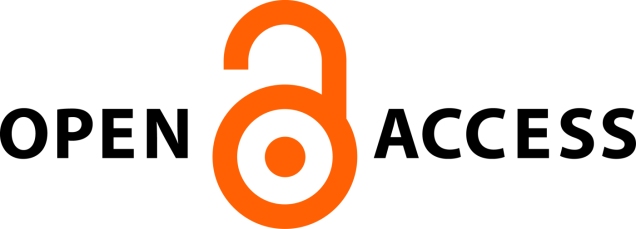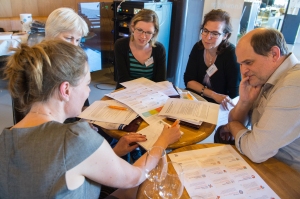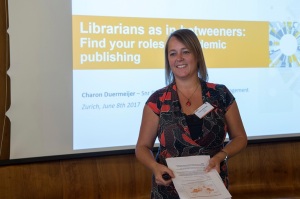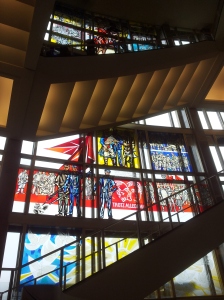Reaching the right audience is important to authors, and when you check out a journal’s ability to do this, you may come across other clues as to quality along the way.
This blogpost is part of a mini-series I’ve been writing about choosing academic journals to publish in – or at least to send your manuscripts to because of course it’s not only author choice. As a librarian, I know about assessing journals for quality, and also about sources of information about journals, and working with both authors and publishers has also informed me. This post is not about defining the right audience (perhaps my piece about alternatives to scholarly journals might help in that arena), but this post focuses more on the question: How do you know what audience a journal has?
Below you will find out about some of the promotional activities that journals and journal publishers may do, but also things you can do yourself, whichever journal publishes your work.
Draft your article – with title & abstract
This is something of a chicken-and-egg thing, because of course you will want to write specifically for your journal of choice. However, your first draft could be revealing, about what sort of audience may be interested in your article. Have you written for an audience from within your own field, or do you think that it has an appeal beyond your own discipline?
Having a title and abstract (see below my tip about fitting keywords into these) may also help as you can use them in publisher tools that suggest journals to you, like these two:
I’ve not personally used either of these, so I don’t know how helpful they are: what do you think?
Read the journal: does it speak to you?
I am repeating one of my earliest tips here, and it is pretty obvious, but reading the journal is possibly the most important thing you could do, before submitting your manuscript (along with reading the instructions for authors). You will find out whether the journal speaks to scholars like you (or the audience you wish to reach), in a language that you understand and find helpful – or not.
I recently came across a great listing of “The shortest papers ever published“. I love the example of the co-authors who apparently deliberately set out to write the shortest maths paper ever, with two words and two figures. It makes little sense to me, but I wonder if it could also be of interest to fans of patchwork and other crafts. Perhaps this paper has some more accessible material written about it as well, but the presentation of this article makes me think that the journal is intended for scholars rather than crafters.
Don’t just read, however: dig around on the journal website. Familiarise yourself with the journal(s) on your shortlist and how they present and promote their articles. This will give you a good idea of how your own paper could be presented or promoted to others. If there is an “editors highlights” section then your article could be promoted in this sort of way.
Also, if you want to know the “market share” or readership of a journal that includes advertisements: you can sometimes find this out by looking at their information for advertisers.
Standards used
This will vary across the disciplines, but does the journal use standards which are common for your discipline, in the way that it presents article content? This might be about particular scripts, language or terms, display of formulae, diagrams or even referencing formats. These are all things which will speak to the expected audience of the journal.
Instructions or information for authors will also help you to see how rigorous a journal is in applying standards.
Who subscribes?
Journal home pages may boast of how many subscribers they have, and whether these are individual members or institutions. If this information isn’t on the home page, look out for annual reports. Such data might help you to compare two or more journals, in terms of the width of audience they can reach. Maybe you might want to be a bit more narrow and strategic, however. If there are certain researchers or research groups in your field, who you know you definitely would like to have read your article:
- Search their library’s catalogue or journal listing: Will your target scholars have access?
You can also search union catalogues like WorldCat for your journal title, to see for yourself how many academic libraries provide access to the journal.
Open Access
If a journal is Open Access (OA), it won’t have any subscribers: instead, it may boast of website visits and download or citation metrics. Theoretically, the OA journal can reach a bigger, unlimited audience, but in practice you may want to dig around a bit more. (Open Access has its own entry in my mini-series, because it might be more important to you than other criteria.)
If the journal is not OA, you can also check out its policy about green OA deposit, on the SherpaRomeo site, so that you can see whether there is anything that you as the author can do, to broaden readership and promote your article through repositories and their communities.
Journal’s promotion to readers / discoverability
Whether the journal is a subscription or OA one, it’s worth digging a little deeper to find out more than just such numbers. In a way, this is about asking, what is the journal publisher doing with your content: are they offering a real service to their authors, making it discoverable? My bullet points below talk through some clues you could look for, but in order to know what is particularly important to your target audience, I recommend reading “How readers discover content in scholarly publications” – or at least look at the figures which are very revealing, by discipline and by high/low income countries. Figure 28, about how researchers discovered the last article they read is particularly interesting!
-
- Where is the journal indexed? By this, I mean can you find it on abstracting and indexing or citation databases where scholars in your field search for literature? Is the journal “search engine optimised” for academic search engines? Check this out by visiting the databases and places where you search for information, and either:
-
- look at their list of journal titles/search for your journal by title
- or try to find one or two of the articles that you’ve read, from your journal of choice (try this on Google Scholar, for instance)
-
- Promotional campaigns. You might not know if a journal does this sort of promotion, but if they don’t tell you on their website, or you didn’t find out about them through promotional activity then some clues include:
-
- Publisher website: what are they promising to new journals that want to join their publishing house, in terms of marketing for journals?
- Conferences: do they sponsor or are they present at/associated with any particularly important meetings for your field?
- Social media channels: if the journal uses Twitter, Instagram or Facebook, take a look at how they are using it. Do they tweet about topical world events and use this to promote articles to wider audiences, for instance? Do they use well-known hashtags for your discipline or field and appeal to academic audiences?
- Google searching: if you do a search for content in a journal, do you get a sponsored result? Keep an eye out for this!
- Call for papers / journal news /press releases : these things aren’t all going to promote your article exactly, but if they are handled well then they will raise the profile of the journal. The journal may also boast of press or media interest in their articles, which might broaden the audience of your article – if your article attracts media attention.
- Perhaps the journal has a way of making articles free to read once they have surpassed a certain number of downloads, as a promotional tool.
-
- Where is the journal indexed? By this, I mean can you find it on abstracting and indexing or citation databases where scholars in your field search for literature? Is the journal “search engine optimised” for academic search engines? Check this out by visiting the databases and places where you search for information, and either:
- Table of Content notifications /RSS feeds/ Search alerts are supported. If your journal offers a range of options for people to be told about their latest articles, then this will help to boost the number of visitors to their site – and therefore possible readership for your article when it appears in their notification.
- A Table of Contents (ToC) might be offered to visitors to a journal site, as an email update. Also, if your journal is listed on the JournalTocs site then this is a good sign in my view: it means that their ToC is accessible to discovery tools.
- I’m a bit old-fashioned in my use of the web, apparently: my RSS feed reader is now called “The Old Reader“!
- Search alerts are most likely supported on the indexing databases and academic search engines anyway, but some publisher platforms also offer search alerts.
- Are Digital Object Identifiers (DOIs) issued for articles? These help by:
- providing a permanent link to your article so that readers can share it with others
- making it easier for others to cite your work: they enable data importing into reference management tools & DOIs are even required in some citation styles (eg APA).
- enabling tracking of links to your article, so that readership & altmetrics for your own article can be calculated… among other benefits.
Which reminds me: does the journal make it easy for others to cite your work, for example by including a “how to cite this article” link or formatted reference?
Society members
Like the math journal I mentioned earlier which featured one of the shortest ever papers, journals which are published by membership organisations and societies will presumably bring a readership to your paper from among their members. If so, you might want to consider:
- How many members do they have, and do all members get copies of or notifications with ToCs from the journal?
- Are you yourself a subscriber/recipient of the journal – and are your peers? (Do YOU read it?!)
- Does the journal come in print as well as electronic format? (See below for why I think this matters)
Print runs or e-only?
Most journals are available online, as e-Journals. Fewer are available in print as well, but journals which do have print runs will probably have been around for longer, so they have had time to establish good reputations. Journals with print runs may be more strict than other journals in their instructions to authors, due to page space and the cost of colour printing, etc. However, the print version is an opportunity for your article to reach audiences that the e-version is less likely to reach.
Advantages of print include:
- Some readers prefer paper
- Print journals can be very attractive items
- They may reach general readers at the newsagents on the high street/at the airport, etc
- Paper can be taken anywhere (OK, so can a tablet, but paper needs no battery and it’s less costly if your paper item gets wet!)
- Those without reliable and fast Internet access, such as in third world countries (and remote areas of first world countries: but does the print copy reach them?)
For many researchers the ideal would be a journal with both print and electronic versions. But others find print too restrictive and the electronic journals do support new functions, so this is something for you to consider: what suits your research best?
Promote your article yourself
I usually finish my training sessions with this thought, but I’m going to mention it here instead this time. I know that publishers should be doing this for you, but even best selling authors do promotion of their work: so think about what you might be prepared to do yourself. Perhaps choose something from my list below – or read what advice your journal gives to authors, for promoting their articles. I like the advice on Nature’s website for authors.
- When you write the article, in the title & abstract, try to use all keywords which researchers with an interest in this topic might type in a search engine.
- Deposit your article into a Green OA repository: they will probably promote your article as well, such as on social media or their “latest additions” page.
- Put a citation for your latest journal article (or output) into your email signature
- Update academic profile sites: doing this through ORCID will make it easier, with one site to update & other profile sites can draw on that.
- Promote your article through social media: maybe you don’t have your own Twitter account or blog, but does someone in your department or institution have one? They will probably be glad to have content to send out! If you do use academic profile sites and social media channels yourself, then I recommend IFTTT as a place to tie them all together and optimise your posting to one channel so that it gets spread into other channels too.
- Create slides explaining/summarising your paper: these can be uploaded to slide sharing sites, also promoted through social media channels and perhaps also used in teaching or speaking opportunities. You don’t have to stop at slides: you could do a video clip or a podcast, or whatever suits your skills.
- Send links or actual print copies to colleagues who are working in similar areas. I personally find it harder to ignore paper on my desk, so for a really key contact, I might use the old-fashioned print option!
Finally, one of the ways you can ensure discovery of your article, is to do everything possible to make sure that it is cited. This is not so easy, it is slightly frowned upon as “gaming” the system, and my blogpost here is not about how to get cited. However, if you come across advice that might tip the odds (such as clearly stating “how to cite this article”, or choosing OA publishing), or if you are not sure about whether or not to self-cite, do bear in mind Figure 28 from that report I mentioned earlier! In the Humanities at least, following a citation is the second highest discovery route, after searching for articles.
A final thought
I’m going to play devil’s advocate: perhaps it’s enough if your article is read by your co-authors, proof-readers you call on, the journal editor and their peer reviewers. It might depend on how specialist your research is, and how important to your field (and influential to your career) those co-authors and peer reviewers are! Perhaps you have bigger plans for your next article anyway: a good strategy is probably to publish in different types of journals. An article from earlier this year on InsideHigherEd urges scholars to broaden their focus, in terms of target audiences. Just another reason why I’ve left impact factors and bibliometrics for last, in my mini-series. Watch this blog in the New Year for the next installment!




















